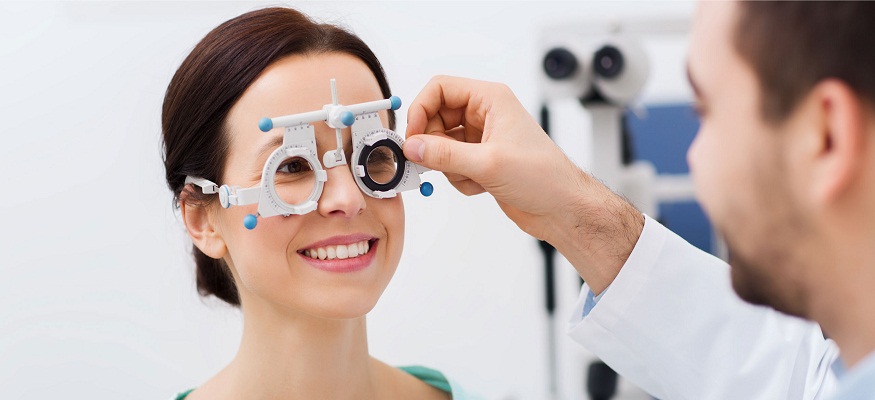Dry eye syndrome is a multifactorial disorder. Benign in appearance, it can lead to serious damage to the ocular structure, which affects the vision and quality of life of patients. This disease, which is one of the most common in ophthalmology, has experienced a strong progression with the generalization of wearing a mask during the Covid-19 pandemic.
It is also a pathology that is more and more frequently treated in pharmacies.
Major epidemiological studies report a prevalence of 15% in adults aged 50 to 95 and show that the risk is higher in women (especially after menopause) and in seniors, but also in smokers
The visual environment is also involved. Massive use of computer and smartphone screens would result in a 30-50% reduction in blink frequency and amplitude compared to baseline; these repetitive strain injuries are associated with an increased risk of dry eye, especially in the youngest
It is therefore expected that the prevalence of this pathology will increase more and more during the next forty years Dry eye syndrome would also have a seasonal character since it would be aggravated by high temperatures, atmospheric drought and the pollen season . In addition, the wearing of the mask imposed by the Covid-19 pandemic has favored the increase in this disorder.
Even if the prevalence of this syndrome seems relatively high, it is very likely that the figures are underestimated, either because patients do not recognize the symptoms or because they do not talk about them to a health professional [ 2] . The pharmacy team must be able to identify, advise and, if necessary, refer the patient to an ophthalmologist.
Tear film disorder
Whatever its etiology, dry eye is always due to a problem related to the tear film, the production or evacuation of which is disturbed or the composition of which is altered. This film then tears in several places, causing irritation of the cornea or conjunctiva, which leads to tearing. If the latter does not occur, the cornea is damaged.
An internal mucosa, whose composition allows the anchoring of the tear film to the corneal surface, smooths out the irregularities at this level. In the cornea itself and composed of mucus secreted by specific cells, it covers the eye and allows the other layers to form the tear film.
An aqueous middle layer , made up of water, electrolytes, proteins, enzymes, and antibodies, supplies the cornea with oxygen and nutrients, and defends it against infections.
An outer lipid layer, the most superficial, has the main function of fighting against the evaporation of tears and ensuring the sliding of the eyelids, or palpebral blinking. Structural lipids are mainly phospholipids with surfactant properties, produced by the Meibomian glands located at the base of the eyelashes.
Functions of the tear film
The tear film, the thickness of which is 34 to 45 micrometers, forms a thin protective barrier in front of the cornea. It fights against dryness, infections and opacification.
Its function is to nourish the non-vascularized cornea, to ensure its lubrication, to protect it from irritation, dryness and foreign bodies, and thus to play a role in the optical power of the eye by covering the irregularities minimal corneal epithelium or contact lenses.
With each blink of the eyelid, the tears formed are immediately swept away and spread over the surface of the eye. The excess is led to the tear holes, superior and inferior, located at the corner of the eye, next to the nose. These meatus are connected to the lacrimal sac. From there, tears are drained through the lacrimonasal duct to the inferior turbinate and then to the nasal cavities, which is why a runny nose is associated with crying. Tears can also be produced by reflex mechanism to psychogenic (emotions), irritative (odors, smoke) or traumatic stimuli. The reflex formation of tears soothes little in case of dry eyes.
Because they are involved in the washing away of allergenic, toxic or irritating substances and because they have an immune role, tears occupy a central place in maintaining a healthy ocular surface.
Pathophysiology
The imbalance between the supply (defect of secretion) and the loss (excess of evaporation) of the tear film leads to an inflammatory response on the surface of the eye at the origin of the symptoms of dry eye. If tear hyperosmolarity is considered central, two major types of mechanisms can be distinguished, often intertwined
Lacrimal hyposecretion, linked to an involution of the lacrimal glands, can be explained by age, hormonal changes or be of drug origin (anticholinergics, antidepressants, retinoids, etc.). It is then a question of aqueous dryness (about 15% of cases).
Tear instability is linked to hyperevaporation of the lipid or mucous film, which explains why it is referred to by the term evaporative dryness. It may be due to dysfunction of the Meibomian sebaceous glands which ensure the quality of the tear film (blepharitis, rosacea, seborrheic dermatitis), prolonged conjunctival inflammation (allergy), preservatives contained in eye drops (benzalkonium chloride), contact lenses, or even refractive or cataract surgery.




